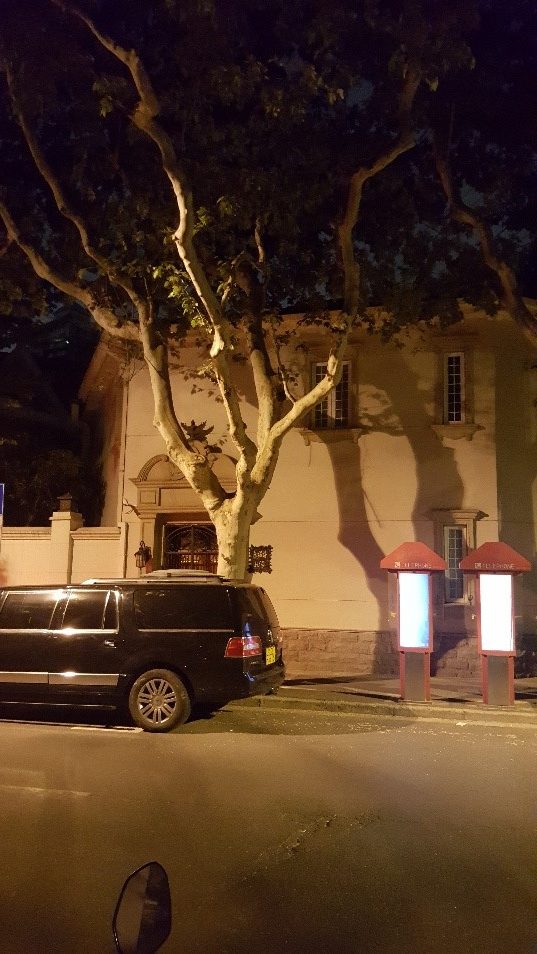
I taught for a few years after graduate school. I wasn’t very good at it, owing to both the lack of any truly meaningful insights of someone only four years older than the students and an innate lack of human empathy.
My vain observation, then and now, was that in a studio of twenty aspiring architects, 6 or so were ambitionless candidates for washout, 10 or so were moderately interested and interesting – hence rescuable, while 3 to 4 were intellectually curious and promisingly well wired to what we do. The problem with my stewardship over the studio, as pointed out to me by the dean, was that I enjoyed my time and conversations with the last group, at the expense of the others whose parents had paid equally for a quality education.
Despite my selective inattention, most all went on to graduate, with careers in a profession that is a house of many rooms.
What I’ve come to believe, and fear, is that those same percentages probably apply to the other noble professions, law and most terrifyingly, medicine. I can only hope that when I’m involuntarily strapped to the gurney, I’m being wheeled into an operating room led by one of those upper 20% who’s wielding a bone saw.
I’m now also equally suspicious about AI- Artificial intelligence, since in my assessment born of vanity, human intelligence seems like an impoverished commodity. I’d like to believe that AI is the stepchild of my beloved 20%, but contemporary grading curves would slide the programmer pack downward to just average.
Good luck Future.
The irony for me in Artificial Intelligence lies in the etymology of “artificial” from Old French artificial, Latin artificialis “of or belonging to art,” artificium “a work of art; skill; theory, system,” artifex (genitive artificis) “craftsman, artist, master of an art” (music, acting, sculpting, etc.) stem of ars “art” + -fex “maker”. In the emphasis on making or craftsmanship, it seems more rooted in the humble authenticity of the work of the hand than the cunning “artifice” of the mind.
The people I admire most, people whose artistries are humbling, have hands like the magnificent sidewalk trees in Shanghai’s French Concession, long, gnarly and reaching. I can count these handsome hand owners on the fingers of my less than expressive, inelegant hands. My dear friend Bernhardt Karpf has hands so big that you’d duck when he’s waving them about to embellish storytelling over dinner and drinks in Stuttgart. Those evenings brought to my wobbly mind what came first on Darwin’s ladder, the spoken word or the graphic gesture. His sister had luxuriously big hands too.
Based on hand size alone, the Germans should have won the Great War…
There is a dubious fringe “science” on the internet—cheirognomy—around the attributes of hands. It’s not much different or skating on more solid pond ice than the late nineteenth century “science” of Phrenology- which was the study of the size and shape of the cranium as a supposed indicator of character and mental abilities. Mostly Phrenology was a fabricated argument for racism.
There’s also a “science” on the internet about personality types of the six varietals of innie/outie navels- Omphalomancy. According to shape given me after Doctor Schmidt cut the cord between me and Little Mother, I’m modest, even-tempered with a big heart and a quiet, shy personality.
Science!
Anyway, in a three-legged sack race, the fingertips of our hands are third in line only to our lips and feet in the density of nerve endings. I had a second, night career as a classical and jazz trumpet player, so my fingers and lips had a cooperative alliance in making. Feet, not so much, except for the bipedal challenges of too many martinis. The hand’s pincushion sensuality, coupled to the dexterity of the bone/muscle/ ligament mechanics and the free-ranging opposable thumb breeds hands as conjoined individuals rather than servile appendages. As such, the word in Japanese for wrist – “tekubi” is “hand (te) neck (kubi)”.
The Danish architect Juhani Pallassama called it “The Thinking Hand.”
According to the science of hands, there are five hand/ personality types, you should write them down, with your hands – Fire, Metal, Water, Wood, Earth. Bernhardt has wood hands, so does one of my partners, Brooke. He looks like he has the extra four knuckles on each finger of an arachnid or the skittering alien in “Alien” as it clamped onto John Hurt’s face to make more skittering aliens.
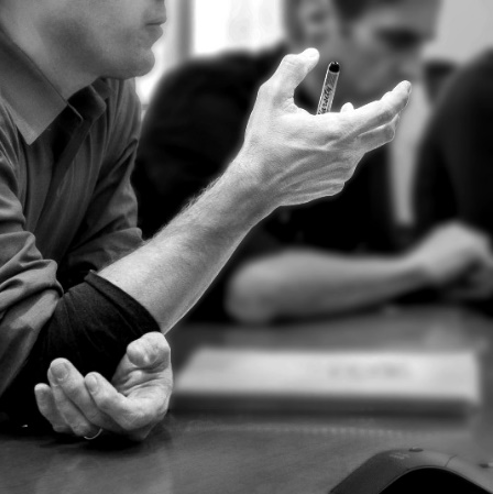
Owing to the long, gnarly fingers and prominent knuckles, some cheirognomists call the Wood hand the “knotty “ hand. From the cheirognomy “handbook” — these “Wood hands have sharp features which stand them out, long and skinny fingers which let bones flash from under the skin and the hand appears ropey. They are quite observant in nature and use those details immaculately into works of creative art. They are often into themselves, for their creative world is far more appealing than the real one.”
Zeppelin’s Jimmy Page has magnificent “knaughty” hands, meant to stroke the neck and pinch the frets of his guitar in a “Whole Lotta Love.” The pull towards the arts latent in the nerve-packed fingertips of his “knaughty” hands compelled adolescent ‘Lil’ Jimmy P. to teach himself the guitar as a means to earn money for his dream to enter art school. Almost sixty years on, he’s yet to enroll.
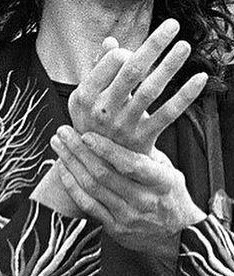
What a failure he’s been.
I admittedly am weak in heart for the gnarly, expressive elegance of knaughty hands, so like the 80% of the students I ignored, I’m hard pressed to match people to the other four types.
Shamelessly at the annual staff review, I rank the studio based on the same harsh, merciless (or merciful) appraisal that was meted out to the crew drifting in the lifeboats from the stoved whaling ship Essex. Those I would eat last have the most utility toward bringing the Pacific doldrum drift to a happy ending. The “last to eat” crew-mate usually has a tell-tail – beautifully “knaughty” hands that can tease lyrical shapes out of the creative ether. One crew-mate has thinking hands that look like Abbott and Costello in “Arrival,” although I’m not sure she can spray Heptapod logograms from her pinky.
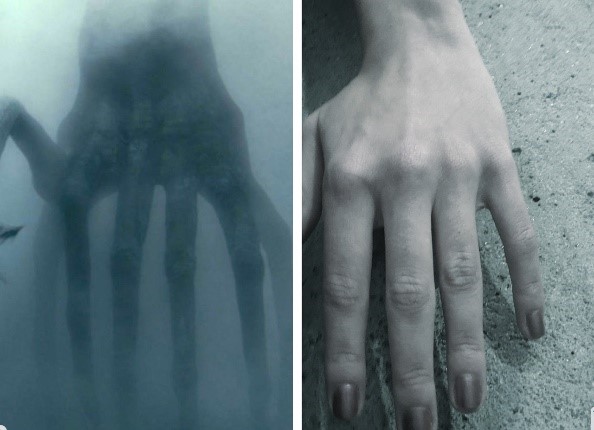
Again, I’m not sure.
My love of knaughty hands gets all crossed- bouleversé – by my love of Le Corbusier. From the photos I’ve seen taken in the Rue de Sevres studio or his painting studio in the apartment on Rue Nungesser et Coli, Pere Corbu had “Earth Hands.” I think he would proudly accept that appellation. Again, from the “handbook” — “Earth hands belong to the people who work silently, hold on straight to the end and never show off but make extraordinary achievements with the accumulation of experience. They always devote to their professional field with great efforts and hold on when others give up. With the accumulation of experience, they create the irreplaceable value.”
Corb was very self-aware of his self-aware hands, drawing them (or they drew themselves) as procreative symbols of creative or progressive thought. In his “Poeme de l’angle droit” he wrote:
The tools in the hand
The caress of the hand
The life that we taste through
The kneading of the hands
The view that we have when we touch.
Andre Wogenscky, Corb’s longtime associate had come to believe, like me, that beautiful, expressive hands, as makers, made beauty. It’s not just that these hands were instruments of intent, but these hands were imprinting or gifting their own glorious beauty onto that which they made – as offspring. He wrote a tribute to Corb’s earthen hands – “Les Mains de Le Corbusier.”
“It was his hands that revealed him. It was as if his hands betrayed him. They spoke of all his feelings, all the vibrations of his inner life that his face tried to conceal.”
Two big strong hands, very big, incised as if with a chisel with very deep furrows. Muscled phalanxes. Vibrant animated hands. Enveloping hands.
Hands that one might have thought Le Corbusier had drawn himself, with that trait of a thousand small successive traces that seemed to look for one another but that in the end formed an exact and precise line…
Hands that had drawn, and were to draw, all his work.”
Corb should have named his hands Abbott and Costello. The three of them – Charles Edouard Jeanneret, Abbott and Costello – wrestled nightly in the Rue Nungesser et Coli studio or the Petit Cabanon in a dirty, messy pugilism against gravity leading to some of the most sensuously beautiful shapes this side of Henry Moore.
Then they would go for the weightlessness of a swim.
For the poet and novelist Marge Piercy, who was born in Detroit when over 300,000 workers, some who played with Motown’s Funk Brother after their shift, were on the line laboring by hand to build automobiles, a hand was meant to do a job.
“The work of the world is common as mud.
Botched, it smears the hands, crumbles to dust.
But the thing worth doing well done
Has a shape that satisfies, clean and evident.
Greek amphoras for wine or oil,
Hopi vases that held corn, are put in museums but you know they were made to be used.
The pitcher cries for water to carry
and a person for work that is real.”
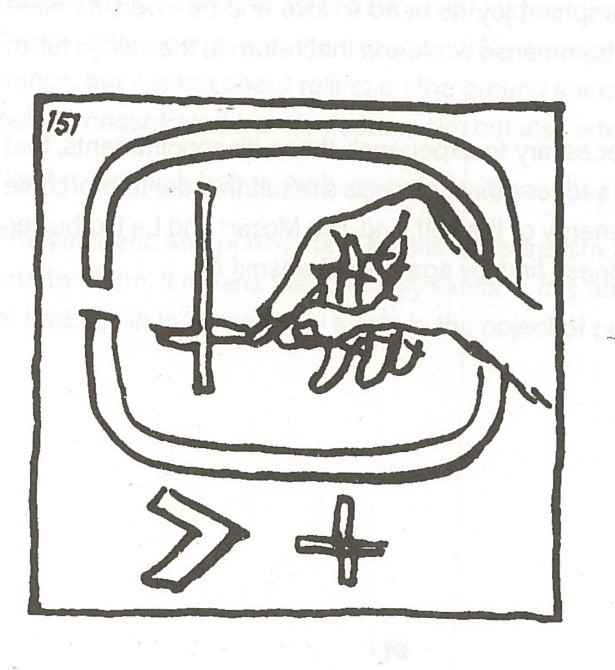
Le Corbusier, Right Angle, detail of Iconstase.
Le poeme de l’angle droit



